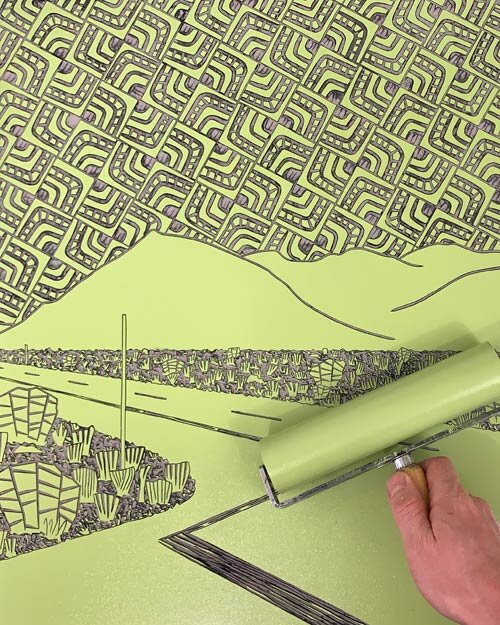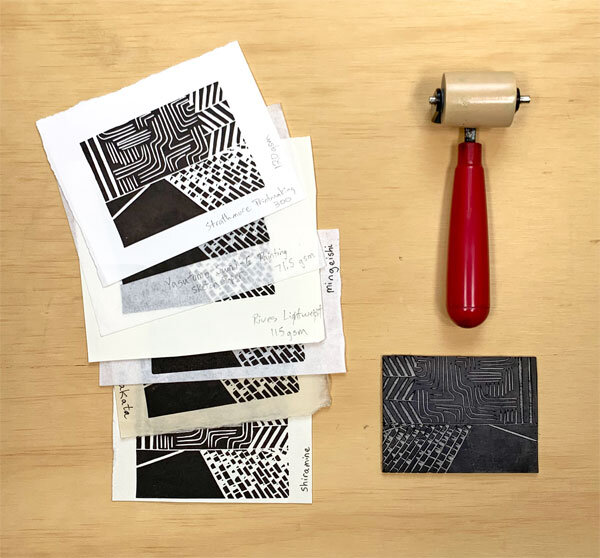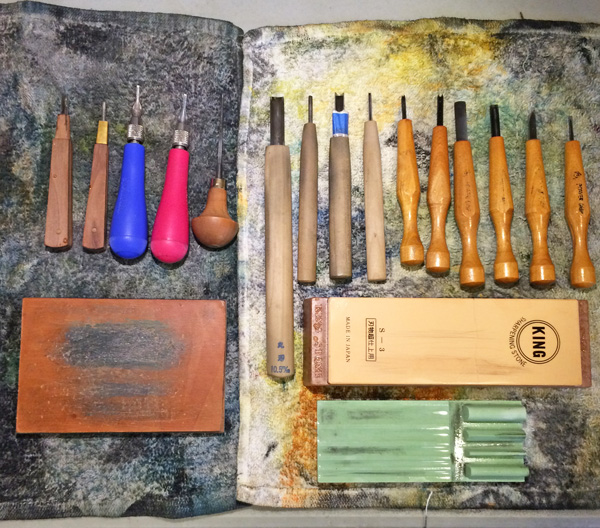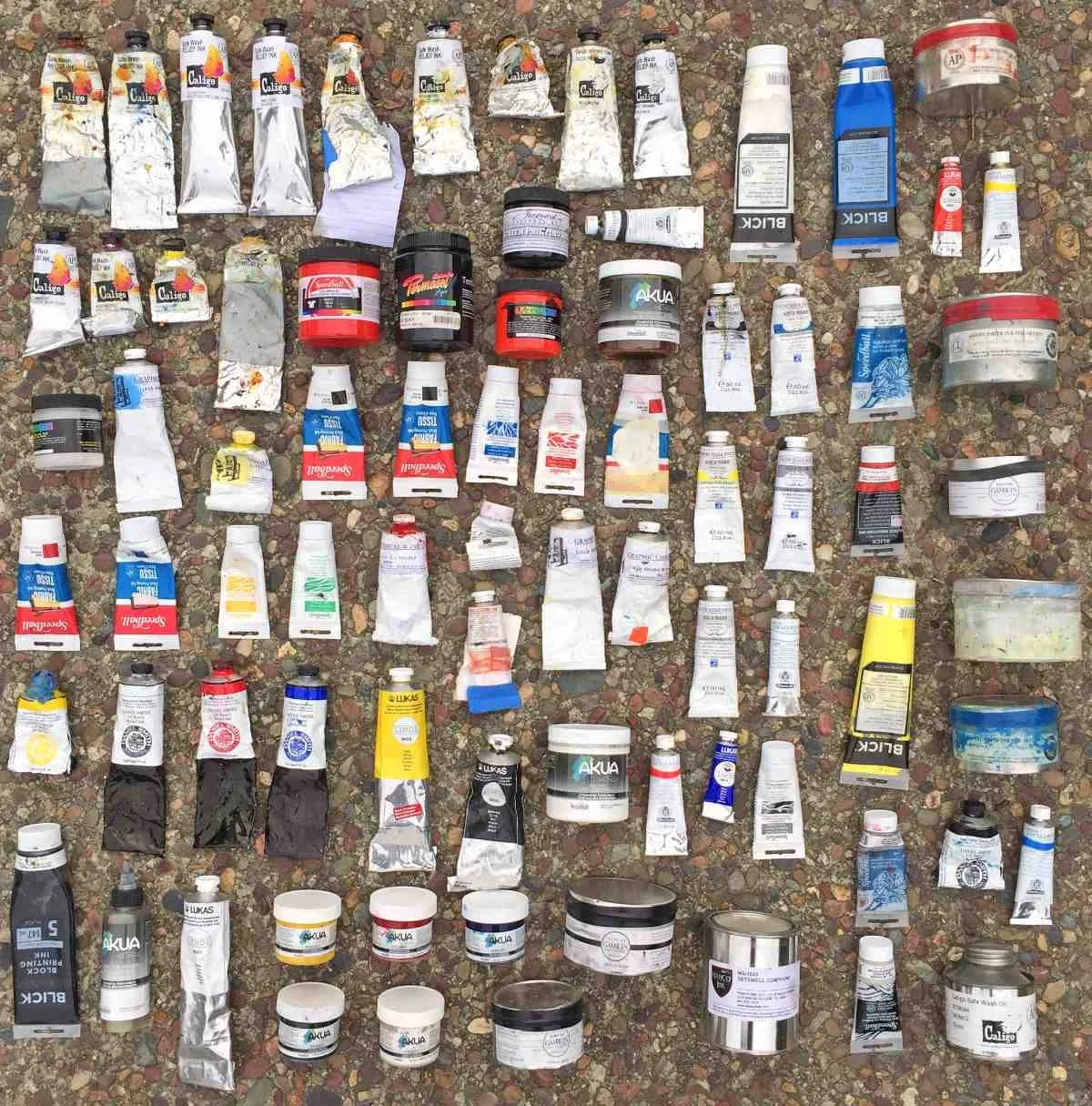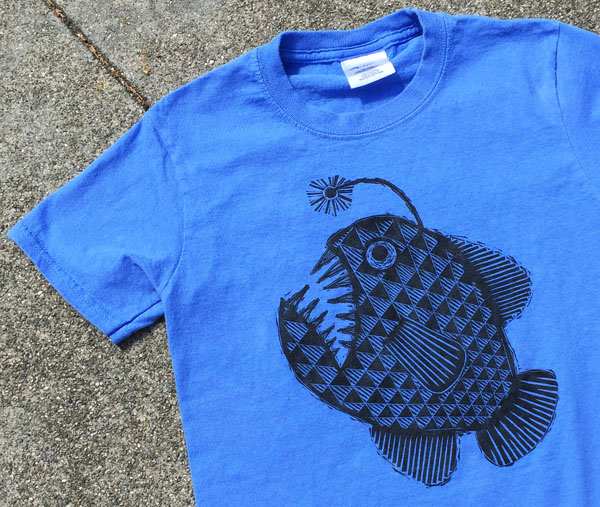Update: Some of these inks are a little tricky to find and people have asked where to get them, so I've included links that will take you to Blick Art Materials and Amazon, where most can be found. If you click on those links, I get a small commission if you end up buying something there since I participate in their affiliate programs. You can find more details about this here. But, the opinions here are all my own and I bought all these inks with my own money. McClain's Printmaking Supplies is a smaller company that also sells relief printing materials.
Best Oil-Based Ink for Printing Linocuts on Paper
Hands down the best overall ink on the market for lino printing, in my opinion. It's the ink that I've gone back to time and time again over the years. It has all the benefits of traditional oil-based ink but because of its special formulation, it comes without the cleanup hassle. Here's how to clean your inked brayer. Hold the brayer over the sink and squirt a fair amount of dish soap on it (no water, yet!) and rub it all around until the ink is completely coated with soap. Then rinse it all under warm water, rubbing it off with your hands. Done. Let it dry.
Caligo inks come in a variety of colors and are widely available online. I recommend starting with tubes of black, white and their process colors (red, yellow and blue). With this color palette you can pretty much get any color you want. I prefer the tubes to the cans of ink - avoiding problems with the ink skinning over. After you get used to the inks you can try the different ink modifiers that they sell. I sometimes use the extender to make the inks more transparent.
Unlike water-based inks, oil-based inks take longer to dry and Caligo is no exception. Expect at least a couple days in my experience but it often is longer, particularly if you've stacked a lot of layers on top of each other. Drying time can be affected by the temperature and humidity of the studio, how thick the ink was applied, the type of paper, as well as the number of layers of ink.
Honorable Mention - Charbonnel Aqua Wash Etching Ink
Yes, it's an intaglio ink but it works just fine for relief printing right out of the tube. Similar to Caligo but a little more expensive and smelly.
Least Favorite - Traditional Oil-Based Inks
Not sure I see the point of using using traditional oil-based inks anymore, given the availability of much easier to work with inks like Caligo and Charbonnel, but Gamblin's line of relief inks are reliable.

